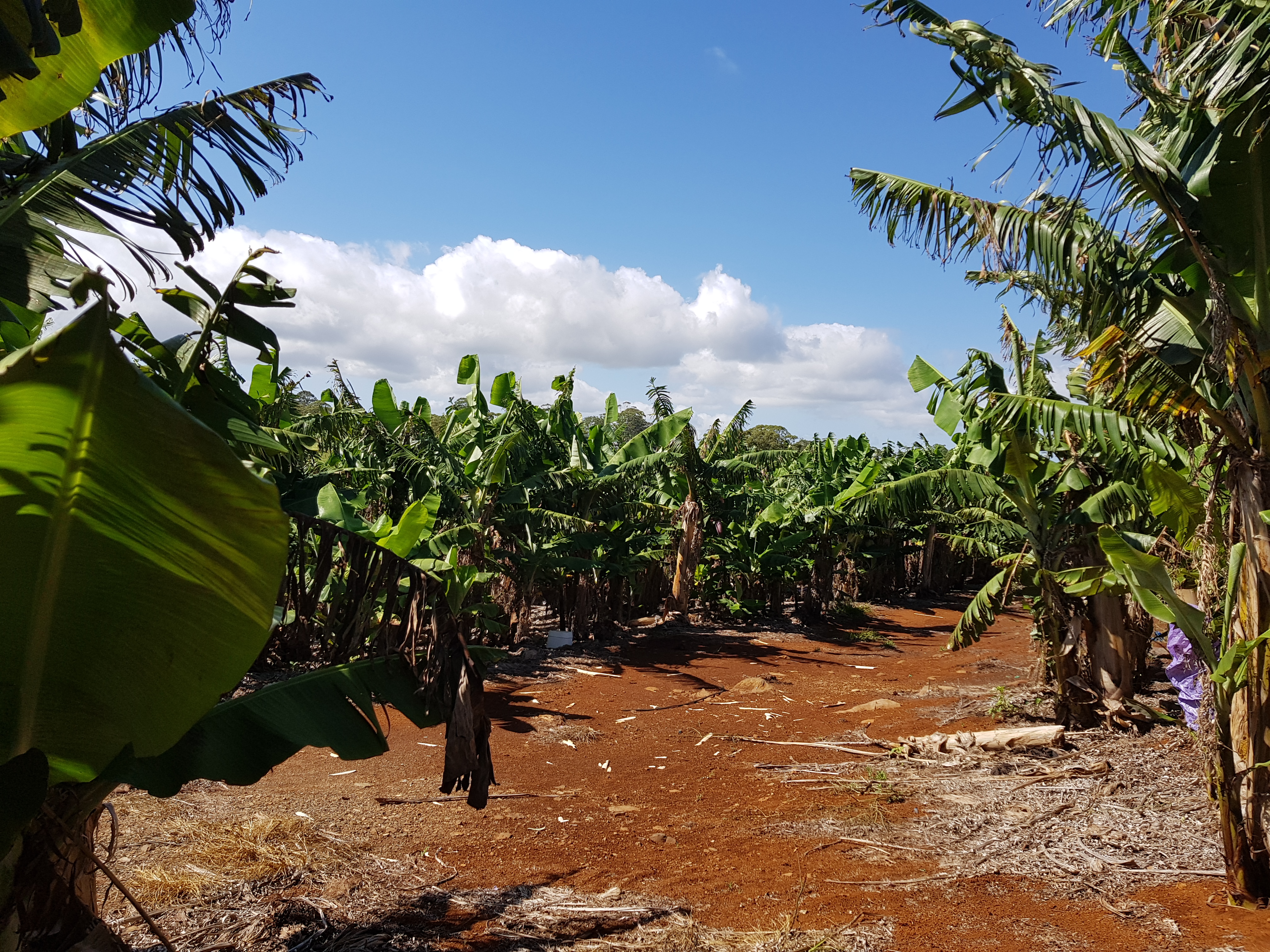Media release
From: Queensland University of Technology (QUT)Banana bunchy top virus (BBTV) is an aphid-transmitted banana disease that has been in Australia since 1913 and has been contained by biosecurity agencies to southeast Queensland and northern New South Wales.
Badly affected plants will not produce fruit if left unchecked and entire plantations can become infested.
BBTV cannot be cured and infected plants must be destroyed.
QUT researchers have designed a model that tracked the probability of a banana plant being infected by aphids that carried the disease, with the findings published in PLOS Computational Biology.
· Aphids can fly long distances to new plantations and quickly infect nearby plants.
· Current inspection measures by biosecurity agents are costly and time-consuming.
· Mathematical and statistical models can help to predict areas of risk of infection.
· A stochastic mathematical model describes disease spread, infectivity and recovery rates.
· External environmental and seasonal factors influence virus spread.
· The framework can be adapted to study dynamics of other vector-borne diseases.
A 2012 study estimated the benefits from eliminating the disease would be worth between $16-27 million to Australia each year.
Distinguished Professor Kerrie Mengersen said despite ongoing traditional methods of monitoring and management of the disease, eradication had proved elusive.
The latest study, conducted in collaboration with biosecurity agents, focused on a BBTV-infected banana plantation in northern New South Wales.
The location of every diseased plant in the plantation was recorded using GPS.
Associate Professor Chris Drovandi said the research expanded existing disease management strategies by calibrating the model to real field data.
“The new model we’ve developed quantifies the effects of seasonal changes, the plantation’s configuration and spread of banana bunchy top virus while predicting high-risk areas,” Associate Professor Drovandi said.
“Peak transmission occurs when temperatures reach 25-30 degrees, so weather is an important factor to consider in the complex dynamics of BBTV spread.”
Since 2014, the banana farm has undergone monthly inspections implementing a “rogue-and-remove” disease management strategy.
QUT researcher Abhishek Varghese joined the study as part of an undergraduate vacation research scholarship, visiting the farm and meeting industry officials.
He said it was difficult to see the symptoms of virus on plants from the air, or by using drones, as the leaves needed to be viewed underneath for infestations.
“The banana trees grow along a steep slope and insects can be swept up and pushed to different parts of the plantation by seasonal forces,” he said.
“Since the 1930s field surveyors have scoured the plantation attempting to individually identify infections by checking banana leaves showing a choked or bunched appearance.
“They mark the infected area without interrupting the insects and spray paraffin oil to ensure the aphids can’t escape and inject a systemic insecticide and herbicide (glyphosate) slowly killing the banana plant and all the aphids inside it.”
Mr Varghese, who is studying a dual engineering and economics degree at QUT, said stochastic mathematical modelling also helped pinpoint areas where the disease remained latent in the soil two or three months after trees had been removed.
“This is an expensive and laborious process for field surveyors so a precise forecasting tool may assist in pinpointing areas to inspect more carefully, reducing costs and making the job easier,” he said.
BBTV was first introduced to Australia in 1913 via infected suckers from Fiji and spread locally through the banana aphid, Pentalonia nigronervosa.
“This is a fantastic example of talented students using mathematical and statistical skills to help solve real problems facing farmers and the agriculture industry,” Professor Mengersen said.
The research, titled Estimating a novel stochastic model for within-field disease dynamics of banana bunchy top virus via approximate Bayesian computation, was authored by Abhishek Varghese, Associate Professor Chris Drovandi, Antonietta Mira and Distinguished Professor Kerrie Mengersen from QUT-based Australian Centre of Excellence for Mathematical and Statistical Frontiers.
MEDIA CONTACT: Debra Nowland QUT Media, 07 3138 1150 media@qut.edu.au after hours 0407 585 901.




